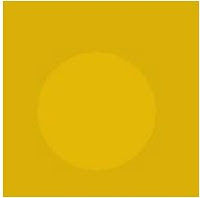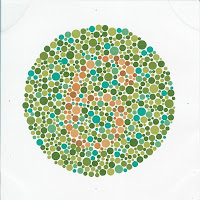I have a disability – I don’t know if you know this, and I don’t really tell many people (except now I’m potentially telling the world) – but I am one of the 5% of males worldwide who suffers from colour blindness. This isn’t necessarily a bad thing, I don’t really notice. I don’t really notice lots of things actually – red flowers on green trees, the difference between traffic light colours (that one’s a joke, I can tell the difference between extremes at each end of the red and green spectrums). Colour blindness is a profound philosophical issue – do we all see the world the same way? How would you describe a colour to a completely sight impared person? Colour can be a pretty abstract concept – particularly if you’re unable to make the distinction between two binarily opposed colours (red and green for example). I can never truly be sure if an outfit is colour coordinated, or what ball I’m actually aiming for in pool, or which wire to cut in a dramatic scene involving a ticking time bomb. It’s ruled me out of careers in the military, the electronics industry and the design industry. And now I can comprehensively show you why. This is a purpose built picture I put together in photoshop – featuring tones from the red and green spectrums – I see simply green… I know there are two colours there because I made the picture using a colour palette function. I can work out the distinction between the colours if I stare at them for long enough.
Now, thanks to the miracle of the internet – you can understand how I see the world with this colour blindness simulator.
It doesn’t quite do it justice – I see more a blurring of the circle with the background and if I really focus on it I get a headache. But this Ishihara diagram will probably help you to see the difference in what I see… unless you’re Joel.
You’re supposed to see a 6 – and I now believe it’s there because I played with the saturation and hue settings in photoshop and I could see it. If I look really hard at the unedited image I can now see where the six is, but I’d have no chance if I hadn’t cheated.
The avid reader will notice that this post has been edited – this occured after I met John Howard and shook his hand – there will be more on that in a later blog.
Comments
Well here is the thing big brother, that is not red but yellow. It seems your small disability may be larger than you suspected!
I’m colour blind too mate. The only problem I ever have with it is not being able to read the numbers on Ishihara charts.
Strangely enough – with a better quality monitor I can actually see a distinction in those colours – methinks it’s time to hit work up for a new screen.
I should point out that I said the circle came from the “red end of the spectrum” it is in fact R 255 G 216 B 0 in Red Green Blue colour – or C 0 M 18 Y 94 K 0 on the Cyan Magenta Yellow Key (CMYK)scale…
Ah, but the question is, is what you see really green? Or is it just what you call green?
… there’s that philosophical question ;)
I’ve always wondered how red/green looks to colour blind people. Methinks this simulator leaves a bit to be desired, but it’s pretty cool. What sort of colour blindness do you have?